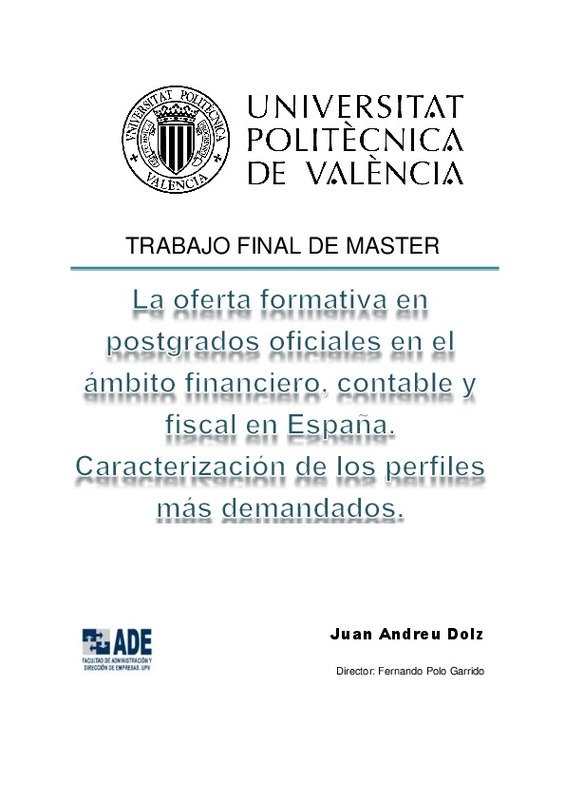|
Resumen:
|
[ES] El presente TFG tiene por objeto llevar a cabo un estudio e investigación sobre las finanzas islámicas en contraposición a las finanzas occidentales. Para ello, se pretende identificar y analizar las propiedades del ...[+]
[ES] El presente TFG tiene por objeto llevar a cabo un estudio e investigación sobre las finanzas islámicas en contraposición a las finanzas occidentales. Para ello, se pretende identificar y analizar las propiedades del sistema financiero islámico, destacando la existencia de un mercado hipotecario libre de los intereses ortodoxos que se encuentran presentes en el mercado hipotecario occidental.
Cabe señalar que, a lo largo de las últimas décadas, las finanzas islámicas han ido creciendo y desarrollándose en todo el territorio oriental hasta llegar a expandirse hacia occidente. El sistema financiero islámico parte de una ideología y unos principios distintos a los del sistema financiero convencional. Así pues, los principales elementos que dan lugar a las diferencias entre estas dos industrias financieras son las prohibiciones impuestas por las leyes del Shari ah, destacando como principal elemento separatista el rechazo al interés o riba. Tanto los fundamentos en los que se basa el sistema financiero islámico, como la oferta de productos financieros que proporciona, han despertado un creciente interés no solo a ojos del potente sistema financiero americano sino, también, en el sistema financiero de la zona euro.
Por tanto, el presente trabajo pretende adentrarse en el estudio del sistema financiero islámico frente al sistema financiero occidental a fin de dar a conocer las particularidades de cada uno de ellos y revelar las posibles ventajas o desventajas que pueden presentar para los usuarios finales. Para fundamentar dicho trabajo se emplearán como base: el estudio teórico, que ofrece una visión de ambos sistemas financieros, seguido de un análisis del sector bancario islámico y el cálculo de un elemento ofertado por los mercados hipotecarios, concretamente una hipoteca inmobiliaria. Para ello, el estudio se ha estructurado en dos partes, un análisis teórico y un caso práctico. La primera parte del trabajo comenzará por ofrecer una visión general y una revisión de los aspectos más relevantes de cada uno de los sistemas junto con sus similitudes y diferencias con respecto a sus principios ideológicos, financieros y sociales. A continuación, se estudiará la estructura organizativa, laboral y departamental que siguen los bancos islámicos hasta llegar al análisis de los productos financieros ofertados. La segunda parte del trabajo se centra en el cálculo y el establecimiento de una comparativa entre hipotecas, en ambos sistemas financieros, teniendo en cuenta los aspectos referentes a la solicitud, registro y cuestiones fiscales.
Finalmente, se procederá a extraer las principales conclusiones resultantes del estudio tanto del sistema financiero islámico como del occidental, y de las particularidades que se pueden dar a la hora de contratar una hipoteca inmobiliaria en dichos sistemas, tanto a nivel de procedimientos teóricos, funcionamiento práctico y el cálculo numérico correspondiente en cada uno de los escenarios.
[-]
[EN] The following research project aims to study and research Islamic finance compared with western finance. In order to accomplish this task, the study attempts to identify and analyse the properties of the Islamic ...[+]
[EN] The following research project aims to study and research Islamic finance compared with western finance. In order to accomplish this task, the study attempts to identify and analyse the properties of the Islamic finance, highlighting the existence of a conventional interest-free mortgage market.
It is important to stress that the Islamic finance had an important growth and development in the East and it also expanded to the West throughout the last decades. The Islamic finance bases on a different ideology and beginnings. In addition, the main element that produces the difference between these two financial industries are the prohibitions established by the laws of the Sheri ah. The rejection of interest rates may be considered the main separatist element between the Islamic finance and conventional finance.
Therefore, the fundamental aspects that give way to differences between these two financial sectors are the bans imposed by the Shari ah laws. The main separatist element that stands out is the refusal of an interest rate or riba. The principles, which the Islamic financial system are based on, like the offer of financial products which it provides, have aroused a growing interest not only in the eyes of the powerful financial American system but also in the Eurozone.
Therefore, this research project aims to scrutinise the Islamic financial system in comparison with the conventional financial system in order to analyse the main particularities of both systems and reveal the existing advantages and disadvantages that the final users or clients might find. The work will be established in two parts: a theoretical study which will offer a general vision of both financial systems, followed by the analysis of the Islamic banking sector and the calculation of a mortgage. In order to accomplish this task, the study will be structured in two parts: a theoretical part and a case study.
The first part will start by offering a general vision and revision of the most important aspects of each financial system, comparing the similarities and differences according to each ideological, financial and social principles. Moreover, the document will study the organisational, departmental and working structure that the Islamic banks follow and subsequently analysing the offered financial products. The second part of the work consists of the calculation and the establishment of a comparison between mortgages, in both financial systems, considering the main aspects referred to the request, registration and tax issues.
Finally, the main conclusions will be drawn as a result of the study of both financial systems, and the particularities that may appear when hiring a mortgage in each system. Analysing both scenarios at a theoretical, practical and numerical level.
[-]
|




![[Cerrado]](/themes/UPV/images/candado.png)



